Sam Teicher is the Co-Founder and Chief Reef Officer at Coral Vita. Coral Vita is restoring the world’s threatened and dying coral reefs by growing resilient corals and transplanting them into degraded sites. They create high-tech coral farms that incorporate breakthrough methods to restore reefs in the most effective way possible and can grow coral up to 50x faster while boosting their resiliency against the warming and acidifying oceans that threaten their survival.
Coral Vita’s land-based farms also function as education centers for local communities as well as eco-tourism attractions. They can also scale to make a significant ecological difference, with a single farm able to grow millions of resilient corals for distribution around a region. By offering reef restoration as a service to clients that benefit from healthy reefs, Coral Vita is developing an industry that can support large-scale restoration.
NEXUS HQ interviewed Sam to learn more about his incredible ocean journey and the origin and growth of the company.
Tell us a bit about your company. What’s Your Why and how did Coral Vita come to be?
I launched Coral Vita with my friend Gator Halpern while we were getting our master’s degrees at the Yale School of Environment. I came from more of a policy and NGO background, and Gator more from academia, both with a lifelong love for the ocean. I’ve been a scuba diver since I was a kid and Gator grew up by the ocean in San Diego. I realized and recognized that a lot of the important and meaningful environmental challenges we are facing in this world were not being solved with the pace or scale required to make a meaningful difference. And one of those things was global coral reef degradation. When we launched the company we had already lost 30% of the world’s reefs and we’re on track to lose 75% by 2050. Just a few years later, we’ve now lost half the world’s coral reefs. The Great Barrier Reef, they this week they just announced it’s going through its third mass bleaching event in five years, something that is supposed to happen maybe once every hundred years.
So we were thinking what can we do to make a difference? I had done a coral farming project when I lived out in Mauritius prior to grad school and saw how this practice of coral farming, which has been around for about two decades or so, can bring respect to life. It’s kind of analogous to reforestation and planting trees, corals are grown in these underwater nurseries. I saw how fishermen were staging their traps 100 yards away from the nursery in Mauritius and fish populations were returning and colors and life were returning. But what was also clear at the time was that the current model wasn’t going to cut it for the scale of the problem. A country like Mauritius needs to be growing 5 million corals a year.
So what we recognized is that ecologically reefs are really valuable and iimportant. They support up to a billion people around the world, in 100 countries and territories. More than a quarter of all marine life depends on them. Conservatively, they generate about $30 billion a year for tourism, fisheries and coastal protection. So we thought, well, they’re valuable, and if people don’t care about the reef for its own sake, oftentimes companies, countries and industries will look at what the value loss would be and would pose to them in coral reefs dying.
So we thought, let’s integrate breakthrough methods, developed by scientists who are now our advisors, who figured out how to grow corals in months instead of decades, through a process called migrofragmenting. The short version of explaining microfragmenting is you cut up pieces of a single colony of coral into tiny little pieces, and you space those corals near each other, but with gaps in between, and it triggers a healing process, and it causes the corals to fuse back into themselves so that you can now grow corals that normally would take 25 to 30 years in 6 to 12 months.
What’s the origin story of the name for the company?
We originally drafted up Coral Vita as part of a business plan for a class we were taking and one of our professors told us the name we had at the time was way too long and cumbersome. So then we really wanted to aim for two syllables, four at the max. We played around with a number of different names and ultimately settled on vita, “vida” is Spanish for life and “vita” is Latin for life, and so it’s kind of an homage to coral life and the work that we are doing. Also, Latin is so much at the roots of western science, and so it’s in a way a shout out to all the scientists out there.
How would you describe your company to a six-year-old?
Corals are one of the coolest organisms on Earth. They’re animals with plants living inside them and they make rock for their skeleton. And in the tropical oceans, corals forms these giant structures called reefs, that almost act like cities for the ocean. But these reefs are dying, and as they die and as the underwater cities disappear. Then a lot of the life in the sea, like turtles and Nemo, and all the beautiful sea creatures out there, they’re disappearing too. So what we do is we grow corals almost like you’d grow a sapling for a tree, and when it’s big and strong enough, we plant that coral back out in the ocean and work with different people who care about coral reefs to get them to help make sure we can keep doing this all around the world so that when you grow up, there will still be beautiful coral reefs to see.
Given the current state of affairs, how has Coral Vita responded to, or been impacted by COVID-19?
Coronavirus has been our second disaster of the year because our operations are concentrated right now in Grand Bahama, which was one of the two main islands hit hardest by Hurricane Dorian. So we had just finished rebuilding our farm and had resumed coral farming operations in March with the plan to be that in April we would resume education and tourism operations.
So the two main aspects of our business, selling reef restoration as a service to developers, hotels, cruise lines, governments, anyone that depends on the ecosystem services, they can hire Coral Vita to restore the feeds that they depend on. At the same time, we turn our farms into education centers for local communities and then also eco-tourism attractions. So people pay to visit the farm like they’re coming to an aquarium and then if they’re really excited, they can adopt a coral or even go out and plant corals. The Grand Bahamas is largely dependent on tourism, particularly on cruise tourism. A big part of our revenue model for this year was going to be on the ecotourism side of things. While also pursuing the restoration contracts, a lot of the restoration contracts that had been moving forward were put on hold because of Hurricane Dorian, and a lot of people who were preparing to pay us obviously had more pressing concerns to take care of. And then, with the sort of likely medium-term stagnation of tourists, we’re having to figure out how we’re going to make money in the near term. We fortunately have enough runway to sustain operations for some time. But we were also in the process of raising a $2 million investment round, to scale from a pilot size facility that could grow 10,000 – 30,000 corals a year to the largest coral farm in the world, growing 100,000 corals a year. We’re still raising funds but also weighing how we’re going to do this growth and expansion while also generating revenue. We’re pressing forward with the fundraising, but we’re also thinking about, okay, if we can’t have revenue generated from people visiting the farm, now might be a good time to launch something we were planning on doing, which is a digital online adopt-a-coral campaign. This way people who are at home away from our farm are able to still help sponsor reef restoration and also learn about what’s happening to reefs, why they matter, and hopefully also use that as a tool to raise more awareness about protecting reefs, but at the very least, generate some revenue through it as well.
What’s one thing that is helping you adjust to the new normal? A work from home hack?
I’m cooking more. I’m working out more. My girlfriend came to the Bahamas before they shut the border and she’s quarantining with me, so that’s nice. Oh and I’m cleaner now 🙂
Share a little more about Coral Vita’s vision and what you feel is its greatest impact on the world.
To be honest, I think it’s that we were growing 24 species of coral last summer and the Caribbean was growing just 3-5 species. We had these coral farming successes but we also are really becoming an exciting place for local school groups to come for students from the Bahamas to learn hands-on, get their hands in the touch-tank, and to learn about and be compassionate about the ocean.
Also, this was of course unintentional but we used a lot of our time, resources and connections after Hurricane Dorian on humanitarian work, all throughout September and October. Even though it was small, I think we made a difference helping people in our local community after that event and it was definitely impact that I’m proud of.
Aspirationally, we want to have coral farms in every country with reefs around the world so that we can keep them alive for future generations. In addition to actually helping protect reefs, we want to grow enough new corals to make a difference, and hopefully show that you can do for-profit for good, for nature.
Hopefully this will also galvanize more investment, not just into reef restoration, but to help jumpstart a restoration economy that has investors and scientists and innovators and community and government all working together to restore and protect ecosystems that ultimately take care of us and that we depend on. If we can help drive more impactful and sustainable solutions, that would be awesome to see.
What are some of Coral Vita’s core values as a company?
It’s always about being based on sound ecological principles. I think we are revolutionary when it comes to a whole new model for environmentalism. But we’re still working with scientists and facts while testing new things; so making sure that we adhere to scientific principles that are accepted by the general community while still doing pretty radical work is a balance that we make sure we strike.
We always make sure to integrate the local communities, for us, having a community based model integrated into our business and into our work is key because ultimately, these are the people who most depend on the health and will suffer the most by the death of the reef. They are the stewards to better protect these reefs in the long term and that means our projects will be more successful too with their engagement.
The third would be, be bold, work hard, and have fun. I think Coronavirus is underscoring just how many important issues there are that people are working on around the world and just how sacred life is and really try to make time for doing the things you love most, because that also matters as much as actually doing the work. Work hard, play hard, and make sure all our employees experience that as well.
What accomplishment are you most proud of to date?
Launching our first coral farm. What started as a back porch idea in grad school and receiving a $1,000 grant from the school turned into managing to bring together a dream team of scientists and build partnerships with national governments, private developers, educators customers, and start growing coral. So bringing that dream to reality in May of 2019 is something that I am very proud of.
What is your favorite Nexus memory?
My first NEXUS event was last July at the Global Summit, so I’m fresh, I’m still a newbie. I have two favorite memories though, the first is the way that the NEXUS community rallied for the Bahamas after Hurricane Dorian. To see what the community did with no thoughts to their own pockets and with their own time and resources to help the Bahamian people, that will always stay with me.
Second would be from this year’s USA Summit, hearing Jonathan Webb speak about his agricultural work in Kentucky. When he spoke about making a just transition, that is an issue that I’ve actually cared about for a long time. I’ve got friends from Appalachia and have a lot of strong feelings about how we can’t keep propping up 19th and 20th century systems like coal, just for the sake of heritage and jobs. Because the world depends on us transitioning to clean energy, but at the same time, we can’t just leave entire communities behind. So, for that type of story to be told and embraced so passionately by the NEXUS crowd was so awesome to see.
Who is your dream connection/person you want to meet? (Professional, personal or both)
Bill Gates. He clearly is a visionary and seems to be putting his money where his mouth is. He seems to have a grand strategic view on things. He recently announced that he is doubling down on combating climate change. To think about how we can solve a lot of these problems with someone like him would be incredible. He’s demonstrating his leadership even more during these times of coronavirus too.
Which celebrity would play you in the biopic of Coral Vita?
I’ve been told that I look like Tom Cruise in The Last Samurai. And a poor man’s John Wick. Or Keanu Reeves, and considering how amazing of a human being is, I’ll take that one.
My business partner Gator of course needs to be in it too! One person one time thought he looked like Leonardo DiCaprio. Leo is a big environmentalist, so I’m on board with it. Or maybe Chris Hemsworth. So we could be played by Chris Hemsworth and Hugh Jackman, an Australian combo.
What shows are you currently binge-watching when you aren’t busy running Coral Vita?
I just watched Tiger King along with probably 60% of America. Also, The Wire. But by far my favorite show that’s still being made right now is Peaky Blinders.
There’s another great one that came out recently on Netflix, it’s called Night on Earth, they use these unbelievable nighttime cameras that capture nature in ways we’ve never really encountered before.
Who are three of the most inspirational people in your life?
My brother was and is a big role model for me. He got me into the environment, entrepreneurship, and even coral farming in many ways. He has personal resilience and witnessing that has been truly inspiring.
My girlfriend Courtney right now is doing absolutely incredible work trying to reinvent the global economic system and empower entrepreneurs and independent business owners through policy, and it’s pretty epic.
Lastly I would say Ruth Gates, our advisor who passed away. In addition to being one of the world’s most brilliant coral reef scientists, she was also the nicest, warmest, most inspirational person imaginable. She is always going to be with all of us and she played a big role in helping us as we got started.
How do you typically start your day?
Slowly. I’m not a morning person. I try and read a little bit and drink some coffee and slowly move out of bed.
The inaugural Accelerator cohort is in several industries but have you noticed any similarities with others? Another Fellow you have seem to have synchronicities with?
Yes, I could think of synchronicities certainly between all of us Fellows as individuals. Despite the differences in terms of where we’re from and what we’re working on, the level of commitment and caring is shared mutually among us. That’s been the best part of this fellowship so far, connecting with the other Fellows.
Most directly, though, I would say we share many similarities with ShoreLock and what Blayne is doing. I think there is so much room for opportunity in the future. There could be a coastal corrosion prevention project that goes simultaneously hand-in-hand with an offshore reef restoration project. Because if you’re building up a living seawall of coral reefs that also is protecting the shoreline, but now that same shoreline can be buffered even more with ShoreLock’s technology. It’s just a win-win.
When travel resumes post-COVID-19, where are you going on vacation? Or where do you first want to go, even if not vacation?
The first place I want to go is back home to Washington DC. I was about to go there when the travel shutdown started. I want to see my parents, my dog, all my friends I grew up with.
For vacation though, New Zealand, hands down. I’ve wanted to go there for 15 years and I still really want to go.
What are one or two books that you found most helpful on your entrepreneurial journey?
There is a book I read a few years ago called Bury The Chains by Adam Hochschild, which is about the movement in the UK to abolish slavery. It was one of the earlier recorded cases of social organizing around a major issue. The level of persistence that it took to organize and how long it took to see change was remarkable. It showed me that communication was key, because the way they told the story mattered in terms of getting more legislators on board to abolish slavery. It was a decades long, multifaceted process to achieve a major social goal.
Here at Coral Vita, we have a major long-term impact goal. We are not a 5 to 7 year company, we might not even be a 10 to 15 year type of company, but we are definitely on a journey that requires building a movement that will involve governments, industry, innovators, entrepreneurs, scientists, teachers, students and local communities working together, and it’s going to take a long time to achieve the goals we want. So that book definitely played an inspirational role.
Another book that was inspirational for me and that I think everyone should read is called The War That Ended Peace by Margaret MacMillan. It’s about all of the factors of World War One, whether from minutes before it started to decades before it started. The analogies to the present day are unfortunately quite apparent, so I think there are a lot of lessons to be learned for our leaders of today by reading that book. Some history books you have to slog through them, but this one is not only totally relevant to today but it’s a page turner.
Given what you know now what would you tell your younger self when you first started Coral Vita?
Wear plenty of sunblock. (Side conversation: The Environmental Working Group’s (EWG) Skin Deep Database can provide you with many options for purchasing coral safe sunblock!)
Also, I would tell my younger self that it is not going to be a straight line, it is going to get bumpy. Be patient and persistent. In the words of Washington Nationals World Series winning baseball manager David Martinez: “Bumpy roads often lead to beautiful places”. I’m a DC sports fan, I still can’t believe we won the World Series, and that was just an amazing quote when he said it last year.
We browsed through Coral Vita’s social media pages a bit. Can you tell us the backstory of these photos?
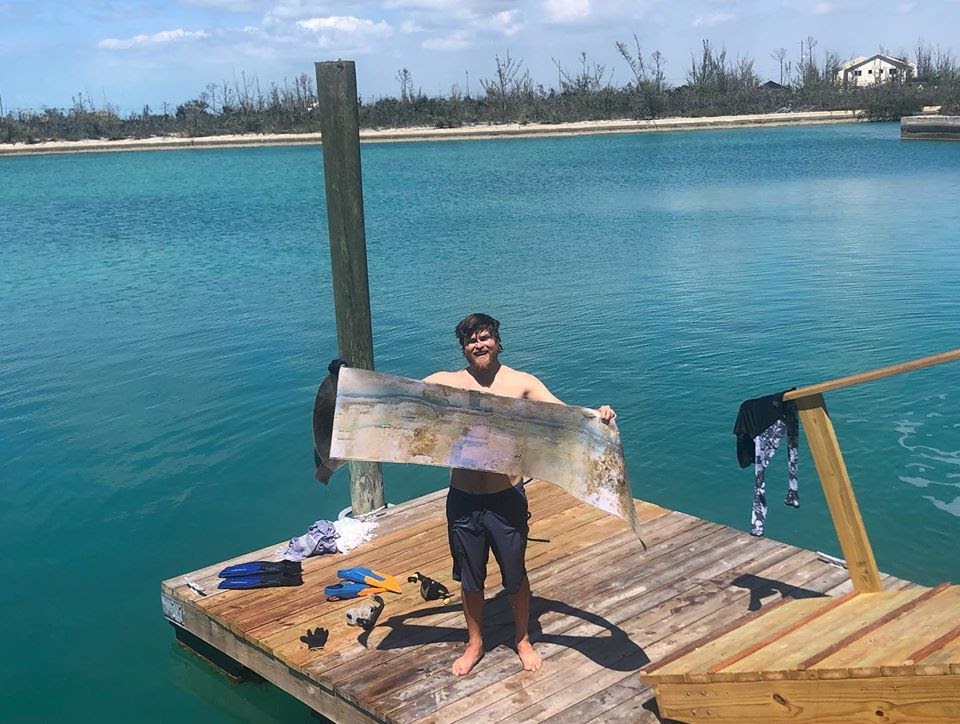
When we moved here we became friends with an older Bahamian-Canadian couple, Ben and Judy Rose. They were two of the nicest people I had ever met. Huge environmentalists. Ben himself was a pioneer in scuba diving. Back in the early days, in the 60’s, he played a big role in mapping out all of the underwater cave systems throughout Grand Bahama. He also really supported what we did at Coral Vita. He had been an educator and had all of these unbelievable hand drawn illustrations of sea life and maps of the island and coral reefs. He had gifted two of them to us. Last summer when we were hit with the hurricane they sadly both perished. Hurricane Dorian came and our farm got hit by 15 feet of storm surge and a good amount of our stuff was lost, from corals to some of our tanks washing up 30 miles away. Some things we found, like the tanks, other things we just assumed were gone forever. Well about two weeks ago, Gator, my co-founder, was snorkeling in the canal right off of our farm and buried in the mud he found Ben’s map of the southern region of Grand Bahama.
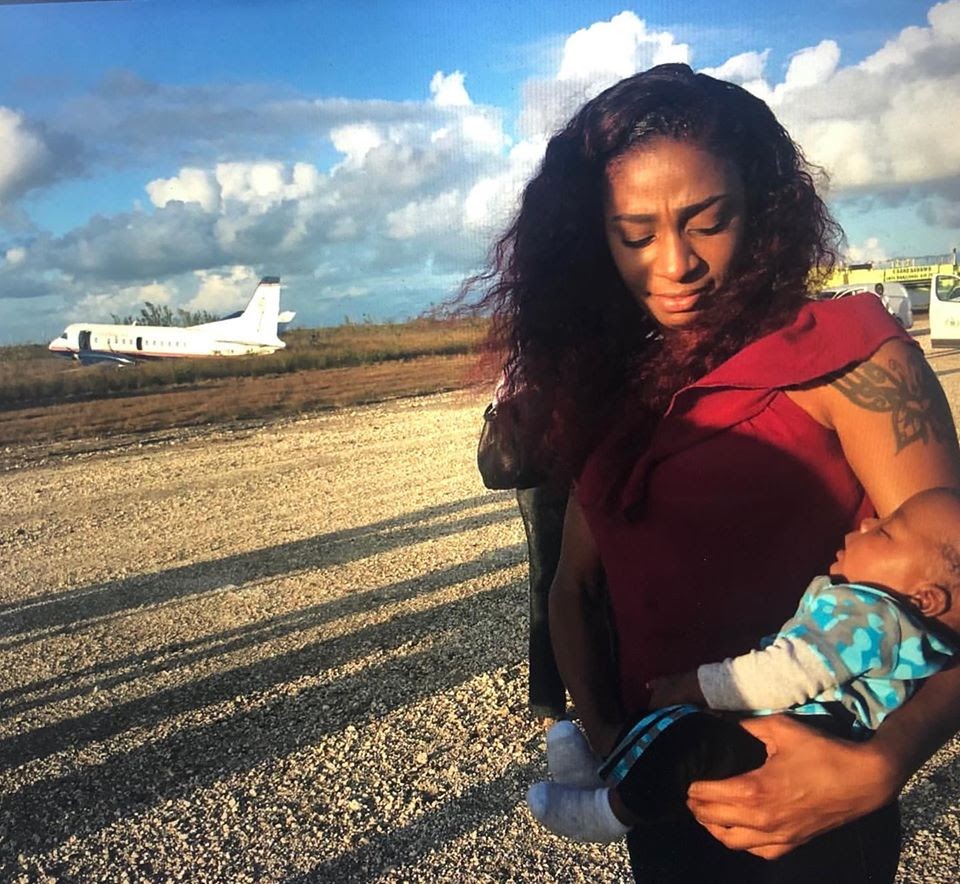
On our very first trip to Grand Bahama when we were deciding if we wanted to build our first farm here or in the British Virgin Islands, we were traveling from Grand Bahama down to Nassau to meet with senior government officials and our plane crashed. We were in the air and there was a problem with the landing gear and we had to circle back. The landing gear got stuck and the pilot did an amazing job still landing us on two wheels. The third wheel came down and blew out the wing at the tarmac. We landed at 120 mph with the wing breaking off and dragging us down the runway. Luckily there were only 2 minor injuries and everyone was okay. The baby even slept through the entire thing!
*This interview has been edited and condensed for clarity.*

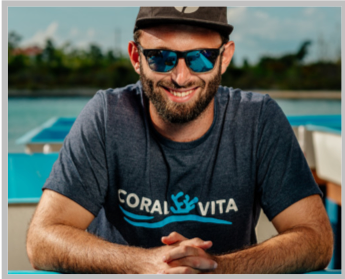

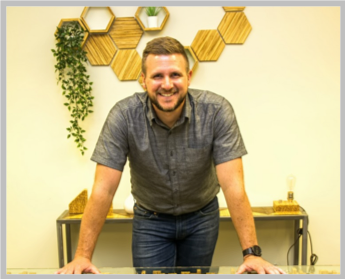
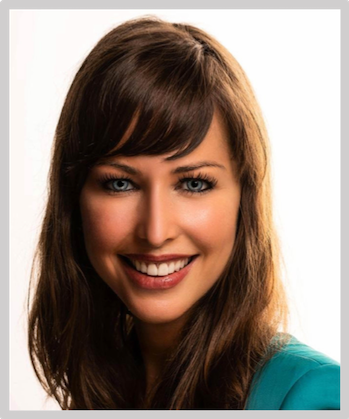

Recent Comments